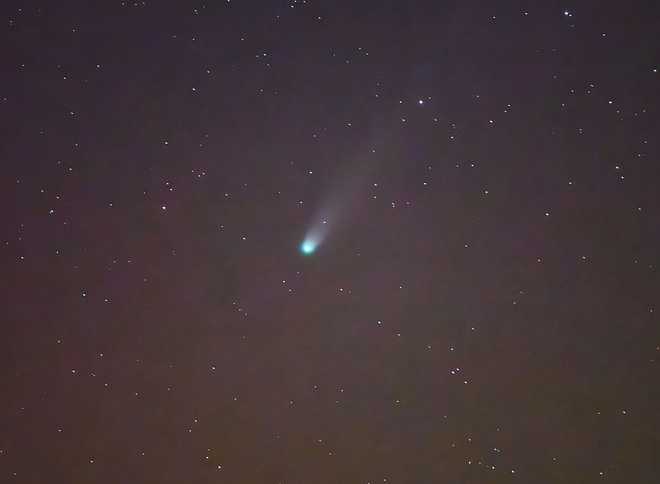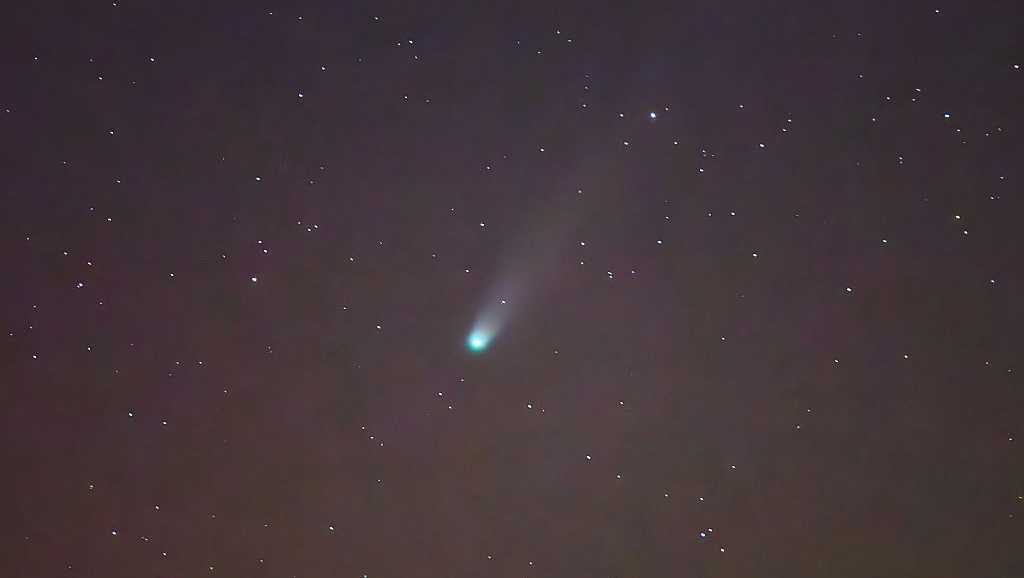A newly discovered comet is about to make its closest pass to Earth on Tuesday night. It should be visible over the Central Coast before it disappears — and won’t be seen again for more than a thousand years.Comet C/2025 A6 (Lemmon) is named after the Mount Lemmon Survey near Tucson, Arizona, where it was first identified by scientists on Jan. 3. Though it was joined in the night sky by another “cosmic snowball” called Comet SWAN on Monday, that comet is expected to grow dimmer as the days go by. Meanwhile, experts are calling Comet Lemmon the best and brightest comet to view from Earth this year.To see it, head to a dark location as far away from city lights as possible, about 45 minutes to an hour after sunset, Gerald McKeegan, an adjunct astronomer at Chabot Space and Science Center in Oakland, told SFGATE in an email. It should briefly appear low in the western sky, about 55 million miles away from Earth. Though it may be visible to the naked eye, you’ll have a much better chance of seeing it using binoculars, he said.That said, the first atmospheric river of the season may put a damper on viewing as the storm is projected to sweep through the Bay Area on Friday. “Unfortunately for stargazers, we are expecting clouds to return tomorrow night as onshore flow increases,” Roger Gass, a meteorologist for the National Weather Service’s Bay Area office, told SFGATE on Monday. The good news is you’ll have plenty of opportunities to try again. Comet Lemmon should be around through Nov. 3 and become slightly brighter around Oct. 26 or 27 as it makes its elliptical orbit around the Sun, McKeegan said. After that, it won’t return to the inner solar system for “at least 1,300 years,” he said. “This will be the only chance to see this comet.” Similar to the green comet that stunned local stargazers back in 2023, Lemmon’s shamrock-colored hue comes from the unique breakdown of different types of ice that make up its body. As it nears the sun, that ice changes from a solid to a gas.“Depending on the composition of the ices in the comet, that gas can appear green,” he said. “It is also common to see comets that appear blue or white, with occasional hints of other colors.”While you’re looking up, you might catch a glimpse of Saturn — look for the bright star in the southeastern sky around 8:30 p.m., and if you have a pair of binoculars handy, you may even see its rings. The Orionid meteor shower is also expected to reach its peak on Tuesday night, but don’t expect too much of a show — it only produces about 20 meteors per hour, McKeegan said.
A newly discovered comet is about to make its closest pass to Earth on Tuesday night. It should be visible over the Central Coast before it disappears — and won’t be seen again for more than a thousand years.

Comet C/2025 A6 (Lemmon) is named after the Mount Lemmon Survey near Tucson, Arizona, where it was first identified by scientists on Jan. 3. Though it was joined in the night sky by another “cosmic snowball” called Comet SWAN on Monday, that comet is expected to grow dimmer as the days go by. Meanwhile, experts are calling Comet Lemmon the best and brightest comet to view from Earth this year.
To see it, head to a dark location as far away from city lights as possible, about 45 minutes to an hour after sunset, Gerald McKeegan, an adjunct astronomer at Chabot Space and Science Center in Oakland, told SFGATE in an email. It should briefly appear low in the western sky, about 55 million miles away from Earth.
Though it may be visible to the naked eye, you’ll have a much better chance of seeing it using binoculars, he said.
That said, the first atmospheric river of the season may put a damper on viewing as the storm is projected to sweep through the Bay Area on Friday.
“Unfortunately for stargazers, we are expecting clouds to return tomorrow night as onshore flow increases,” Roger Gass, a meteorologist for the National Weather Service’s Bay Area office, told SFGATE on Monday.
The good news is you’ll have plenty of opportunities to try again. Comet Lemmon should be around through Nov. 3 and become slightly brighter around Oct. 26 or 27 as it makes its elliptical orbit around the Sun, McKeegan said.
After that, it won’t return to the inner solar system for “at least 1,300 years,” he said. “This will be the only chance to see this comet.”
Similar to the green comet that stunned local stargazers back in 2023, Lemmon’s shamrock-colored hue comes from the unique breakdown of different types of ice that make up its body. As it nears the sun, that ice changes from a solid to a gas.
“Depending on the composition of the ices in the comet, that gas can appear green,” he said. “It is also common to see comets that appear blue or white, with occasional hints of other colors.”
While you’re looking up, you might catch a glimpse of Saturn — look for the bright star in the southeastern sky around 8:30 p.m., and if you have a pair of binoculars handy, you may even see its rings. The Orionid meteor shower is also expected to reach its peak on Tuesday night, but don’t expect too much of a show — it only produces about 20 meteors per hour, McKeegan said.

